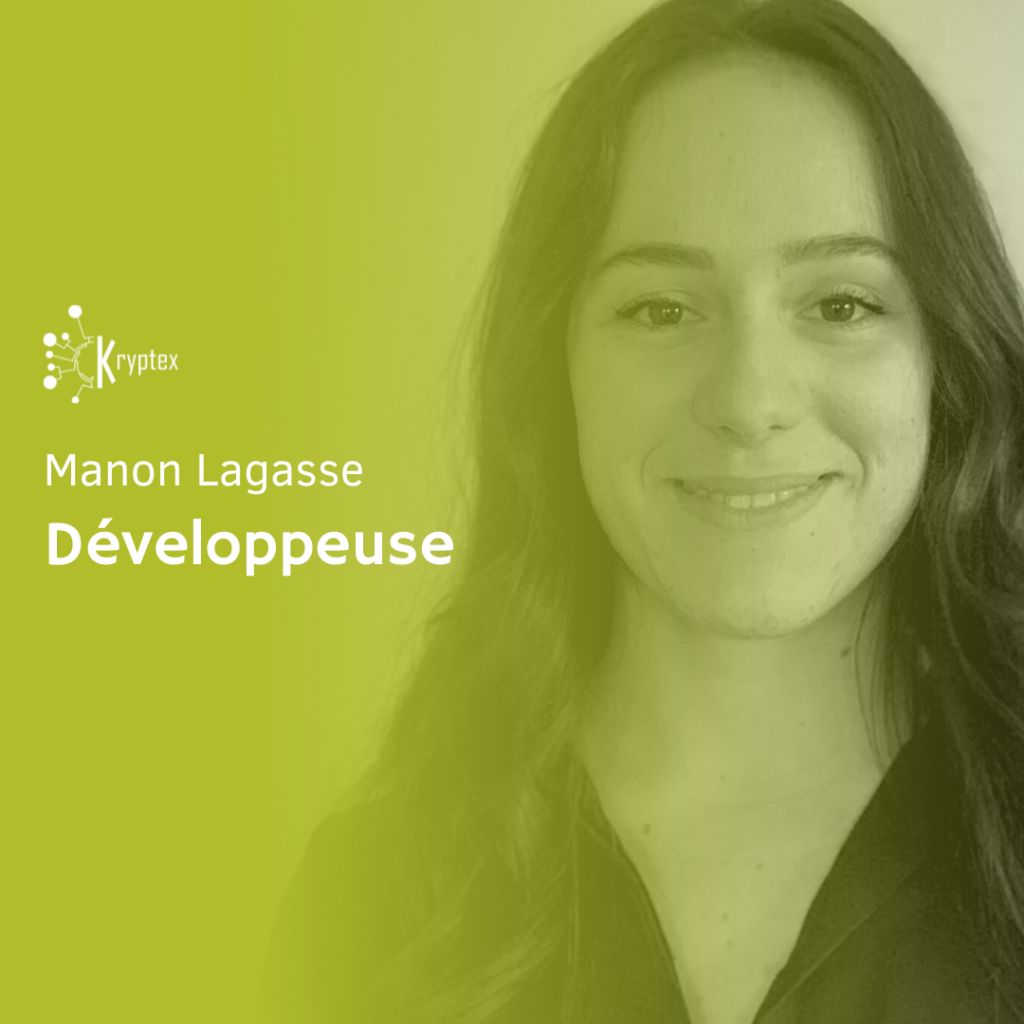"My job as a developer allows me to make game backgrounds more vivid and immersive."
As a developer at Kryptex, Manon Lagasse is responsible for coding the special effects, sounds and other puzzles that make up the games. She talks about the electronic requirements of certain projects and the importance of IT development in escape game design.
Can you explain the role of the developer in an escape game project?
I work on the electronics and IT team. I code all the special effects, sounds and lights in the escape game rooms. I also help develop the game master software that automates the room. I also code the various puzzles.
What is your initial training? What brought you to escape games?
I have a degree in computer engineering. I discovered escape games when I was studying, and I've played a few. Right away, I saw it as a sector of interest because it was close to my study projects, which concerned connected objects and home automation. It's quite similar, except that it's in the field of gaming. And when I left school, I was hired by a company specializing in escape games.
What drives you to develop an escape game?
In terms of technology, it's quite similar to what we deploy in home automation. In the escape game, I like the possibility of testing, discussing with the designers, giving them and proposing ideas to bring the game to life. My job allows me to make the settings more lively and immersive, and that's great. I'm involved in a lot more areas, so it's much more complete. At school, I only did embedded development, whereas here I do network installation, I take part in electronics and I sometimes go out on site. It's much more multi-disciplinary.
What were your favorite projects to work on?
The Crime of the Orient Express project made a big impression on me. The sets were incredible, and being able to add special effects - doors that opened by themselves, sounds that surprised the players - was really stimulating. I also really enjoyed the Houdini's Chest project. I installed it in Perpignan, and it's a very elaborate electronic project. It's one of the most complex projects I've ever worked on. There are a whole bunch of puzzles with a system of optical illusions. By placing elements on the box, the player can open trap doors. There was also a round screen on the side to track progress, as well as touch-sensitive mini-games on the top of the box. My favorite feature was the backlit stained-glass window on the side, which could be used to reveal drawings through transparency. It was very advanced in terms of computer design.

